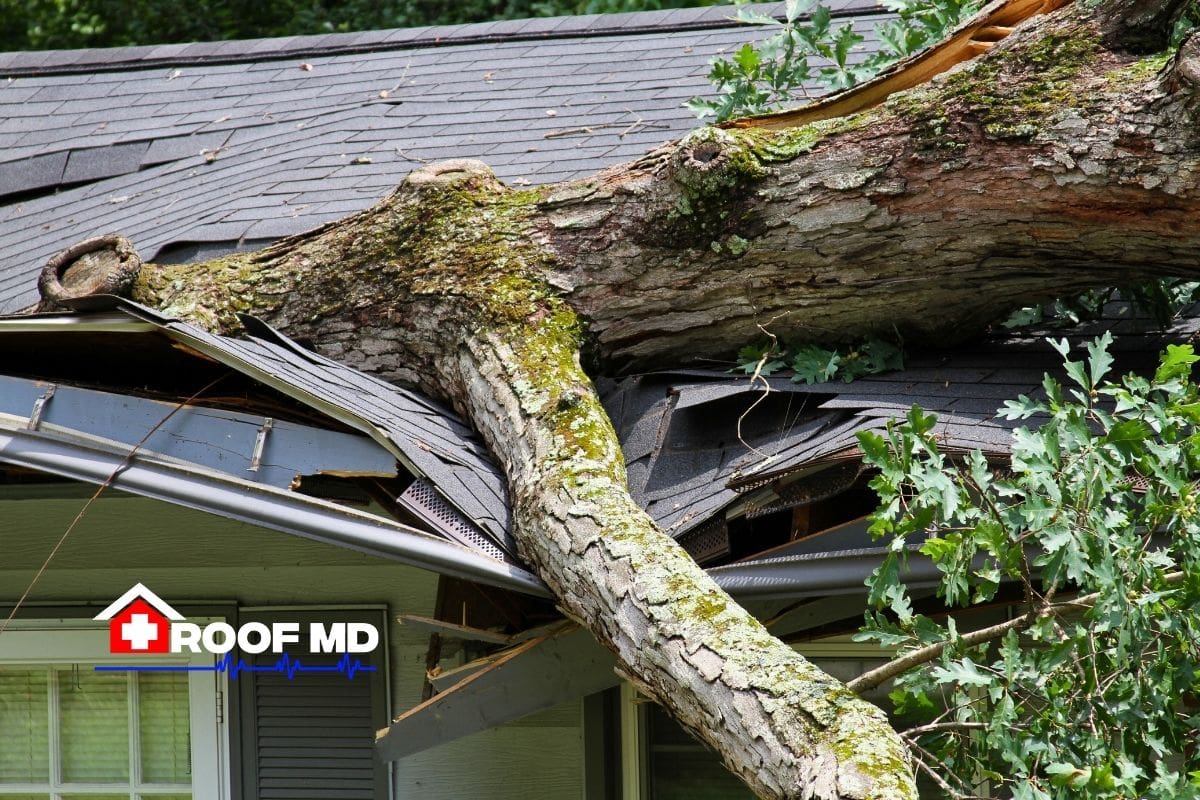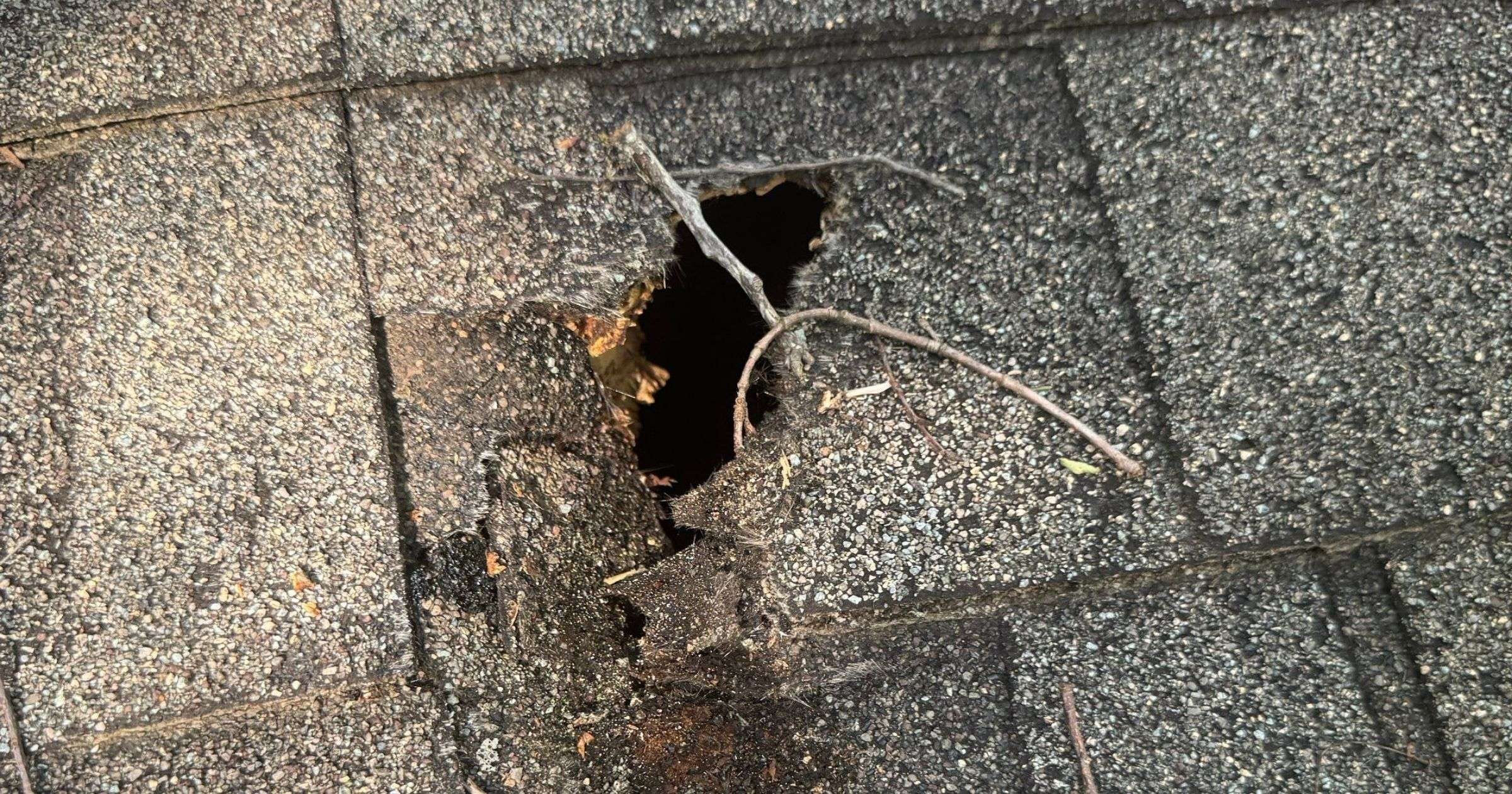Damaged in a Storm? Understanding Your ACV Insurance Policy

The fury of a storm has passed, but the aftermath can be just as stressful. You walk outside, look up, and see what every homeowner dreads: missing shingles, dents from hail, or even more severe damage to your roof. Your first thought is likely, “Thank goodness I have home insurance.” But before you pick up the phone to file a claim, there’s a critical three-letter acronym you need to understand: ACV.
What is an ACV policy? How does it work? And what does it mean for your wallet when it comes time to replace your storm-damaged roof? This guide will break down everything you need to know about Actual Cash Value (ACV) roof insurance policies, so you can navigate your claim with confidence.
What is an ACV Insurance Policy?
In the world of insurance, there are two primary ways your property is valued for a claim: Replacement Cost Value (RCV) and Actual Cash Value (ACV).
- Replacement Cost Value (RCV): This is the more comprehensive (and typically more expensive) coverage. An RCV policy pays to replace your damaged property with materials of similar kind and quality at today’s prices, without deducting for depreciation.
- Actual Cash Value (ACV): An ACV policy pays for the replacement cost of your damaged roof minus Depreciation is the decrease in your roof’s value over time due to age, wear and tear, and general deterioration.
Think of it like trading in a car. You wouldn’t expect to get the price of a brand-new 2025 model for your 10-year-old vehicle. ACV applies the same logic to your roof. The insurance company calculates what your roof was worth the moment before the storm hit, and that’s the amount they will pay out.
Why It’s Crucial to Know if You Have an ACV Policy
The difference between an RCV and an ACV policy can mean a difference of thousands, or even tens of thousands, of dollars out of your own pocket. If you assume your insurance will cover the full cost of a brand-new roof and you have an ACV policy, you are in for a significant financial shock.
Knowing your policy type before you need it allows you to:
- Budget Accordingly: If you have an ACV policy, you know you will be responsible for the depreciation amount. This allows you to plan and save for that eventual expense.
- Make Informed Decisions: You can assess whether switching to an RCV policy is worth the higher premium for greater peace of mind.
- Avoid Surprises: Understanding your coverage prevents disputes and frustration during the already stressful claims process.
How an ACV Policy Works: A Step-by-Step Example
Let’s walk through the math to see how an ACV payout is calculated.
Imagine a hailstorm damages your 15-year-old asphalt shingle roof. Your roofer and insurance adjuster agree that the roof needs a full replacement.
Here are the numbers:
- Total Cost to Replace the Roof Today: $20,000
- Expected Lifespan of Your Type of Roof: 25 years
- Current Age of Your Roof: 15 years
Now, let’s do the math:
- Calculate the Depreciation Rate: The roof has used up 15 of its 25 years of life.
- Depreciation Percentage = (Age of Roof / Expected Lifespan) = 15 years / 25 years = 0.60 or 60%
- Calculate the Total Depreciation Amount: This is the portion of the value the roof has lost.
- Total Depreciation = (Replacement Cost) x (Depreciation Percentage) = $20,000 x 60% = $12,000
- Calculate the Actual Cash Value (ACV): This is the amount the insurance company will pay before your deductible.
- ACV = (Replacement Cost) – (Total Depreciation) = $20,000 – $12,000 = $8,000
- Factor in Your Deductible: Let’s say your policy has a $1,000
- Final Insurance Payout = ACV – Deductible = $8,000 – $1,000 = $7,000
In this scenario, to get a new $20,000 roof, you would receive $7,000 from your insurance company. You would be responsible for paying the remaining $13,000 ($12,000 in depreciation + $1,000 deductible) out of pocket.
I Have an ACV Policy and Storm Damage. Now What?
Finding out you have an ACV policy after the damage is done can be disheartening, but don’t panic. Here are the steps to take:
- Prevent Further Damage: Safely tarp the damaged areas of your roof to prevent water from entering your home.
- Document Everything: Take clear photos and videos of the damage from every angle. Document the date of the storm.
- Contact Your Insurance Company: Call your insurer immediately to start the claims process. They will assign you a claim number and an adjuster.
- Get Multiple Quotes from Reputable Roofers: Obtain at least three detailed estimates from licensed, insured, and well-reviewed local roofing contractors. Make sure they know you have an ACV policy. This helps ensure the adjuster’s estimate is fair and in line with local market rates.
- Meet the Adjuster: Be present when the insurance adjuster comes to inspect the roof. Have your roofer there if possible, so they can discuss the scope of the damage together.
- Review Your Settlement: Once you receive the adjuster’s report and settlement offer, review it carefully. Make sure it aligns with your contractor’s quotes and that the depreciation calculation is fair and accurate.
- Plan Your Finances: Knowing your final payout amount, you can now plan how to cover the remaining cost of the roof replacement.



Warning Signs: Common Pitfalls and Roofer Scams with ACV Policies
Unfortunately, the confusion surrounding ACV policies creates opportunities for unscrupulous “storm chaser” roofers. Be extremely cautious of any contractor who:
- Offers to “Cover” or “Waive” Your Deductible: This is a huge red flag and is illegal in many states. They often make up the difference by cutting corners, using subpar materials, or submitting an inflated, fraudulent invoice to the insurance company.
- Promises a “Free Roof”: No roof is free. This is a sales gimmick designed to get you to sign a contract without understanding your financial responsibility.
- Pressures You to Sign Immediately: A reputable roofer will give you time to review their estimate and check their references. High-pressure tactics are a sign of a scam.
- Misrepresents Your Policy: Some may say, “Don’t worry, we’ll get the insurance to pay for everything,” without even looking at your policy documents. They create a mess for you when the insurance company only pays the ACV amount, leaving you on the hook for the rest.
- Asks for a Large Upfront Payment: Never pay a large deposit, especially in cash, before any materials have been delivered or work has begun.
Your best defense is knowledge. Always demand a detailed, written contract. Verify the roofer’s license and insurance. And never sign a document that gives a roofer the right to act on your behalf with your insurance company.
The Bottom Line
An Actual Cash Value policy is a common and legitimate type of insurance coverage. While it results in higher out-of-pocket costs for a roof replacement compared to an RCV policy, it is not a dead end. By understanding how it works, verifying the math, and partnering with a trustworthy, professional roofer, you can successfully navigate the claims process and restore the most important shield protecting your home.
Take a moment today to pull out your insurance policy. Find the “Declarations Page” and look for the terms “Actual Cash Value” or “Replacement Cost.” Knowing where you stand is the first and most important step in being prepared.
